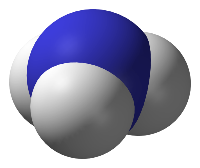Top Five Impediments to Business Success

Impediment #1: Expecting Seed Capital for New, Unproven Ideas and Teams from People Who Don’t Know You. There are exceptions to this rule, but the rule itself is worth stating: take a second mortgage on your house, or hit up family and friends for the capital necessary to develop a working model of new technology. And do not expect the fact that you have a patent to convince investors that your idea is workable. I do not claim to know exactly how the patent process works, but I know enough to see that it is completely dysfunctional; I’ve seen patents for things that couldn’t possibly work in the real world.
Impediment #2: A Business Concept that Screams, “Me Too!” An investment banking firm that I work with locally here in California decided against one of the deals I brought them the other day, purely on the basis of “barrier to entry.” They liked the team, the business concept, the projected growth of the sector, the power-purchase agreement methodically signed into place – and several other things. But they refused to go forward when they realized that there was nothing proprietary or unique about the company’s approach to the market – and that my client could face competition from many different sources.
Impediment #3: A Business Plan that Is Too Short, Too Long, Confusing, Amateurish, or Just Not Compelling. The document that represents your idea needs to be fully professional, and tell your story in a concise yet complete way.
Impediment #4: Lack of Marketing Focus. I leafed through a 70-page business plan for an electric boat manufacturing company the other day. I thought they did a reasonably good job at educating the reader on the market, the imperative to replace noisy, smelly gasoline engines, etc. But I was amazed to find essentially zero discussion of what I consider to be the single most important aspect of any plan: sales and marketing. Who’s going to buy this? Why? How will they learn of the product and pursue that interest to completion? Business plans based on the mistaken notion that “if I build it they will come,” are non-starters.
Impediment #5. Ignoring the Power of Online Marketing. Unless you’re operating in a stealth mode for some reason, it is vital that you explore social media, blogging, and other ways of developing and promoting content that positions you as a thought-leader in your industry. I hesitate to say this, as it could be construed as bragging, but the average number weekly visitors at 2GreenEnergy doubled over the past three months – and that figure represented a doubling of the figure three months earlier. Do you know how much we’ve spent doing this? Virtually nothing. It happens automatically, as a natural consequence of a good SEO strategy and taking an advocacy position for something important, offering content that people find useful.
As always, I welcome comments and questions.



 I just had an interesting experience that I thought I’d share. I’ve mentioned that I’m a partner in a company that imports and sells electric vehicles into island nations – starting with Bermuda. And what’s not to like about that? You’ll work hard to find a better set of factors militating toward EVs anywhere in the world: expensive gas, huge tax incentives, low speed limits, short drives, wealthy people, etc.
I just had an interesting experience that I thought I’d share. I’ve mentioned that I’m a partner in a company that imports and sells electric vehicles into island nations – starting with Bermuda. And what’s not to like about that? You’ll work hard to find a better set of factors militating toward EVs anywhere in the world: expensive gas, huge tax incentives, low speed limits, short drives, wealthy people, etc.
 In a recent post, Bill Paul points out that the reaction to the oil spill in the Gulf should be algae-generated biofuels. But why not liquid ammonia, as Peak Oil pundit Matt Simmons would suggest? As Matt old me when I interviewed him for my book on renewables (and then reminded me in a phone call the other day) anhydrous ammonia is an ultra-clean, energy-dense alternative liquid fuel, for which an enormous delivery infrastructure is already in place. With the exception of hydrogen (for there is virtually no delivery infrastructure) ammonia is the only fuel that produces no greenhouse gases (GHG) on combustion. Ammonia will power diesel and spark-ignited internal combustion engines, and can be manufactured from simply water and air using clean renewable energy.
In a recent post, Bill Paul points out that the reaction to the oil spill in the Gulf should be algae-generated biofuels. But why not liquid ammonia, as Peak Oil pundit Matt Simmons would suggest? As Matt old me when I interviewed him for my book on renewables (and then reminded me in a phone call the other day) anhydrous ammonia is an ultra-clean, energy-dense alternative liquid fuel, for which an enormous delivery infrastructure is already in place. With the exception of hydrogen (for there is virtually no delivery infrastructure) ammonia is the only fuel that produces no greenhouse gases (GHG) on combustion. Ammonia will power diesel and spark-ignited internal combustion engines, and can be manufactured from simply water and air using clean renewable energy.
 TV’s talking heads seem to think that wind and solar power are the answer to reducing America’s oil usage. How stupid can they be? Wind and solar make electricity, which won’t be ready to power large numbers of motor vehicles for many years. Biofuel is the only short-term answer — not fuel-blending ethanol but fuel-substituting algae. I’m still waiting for one of TV’s talking heads to talk about the need for a massive program to put algae-derived gasoline refining on the map.
TV’s talking heads seem to think that wind and solar power are the answer to reducing America’s oil usage. How stupid can they be? Wind and solar make electricity, which won’t be ready to power large numbers of motor vehicles for many years. Biofuel is the only short-term answer — not fuel-blending ethanol but fuel-substituting algae. I’m still waiting for one of TV’s talking heads to talk about the need for a massive program to put algae-derived gasoline refining on the map.
 Regardless of what happens with renewables, we can all agree that energy efficiency represents a large part of getting where we need to be in terms of sustainability. But trying to make sense of utilities’ billing policies for on- and off-peak usage — ostensibily aimed at encouraging sensible energy consumption — is impossible.
Regardless of what happens with renewables, we can all agree that energy efficiency represents a large part of getting where we need to be in terms of sustainability. But trying to make sense of utilities’ billing policies for on- and off-peak usage — ostensibily aimed at encouraging sensible energy consumption — is impossible. 

 I had lunch last week with Pete May, publisher of
I had lunch last week with Pete May, publisher of